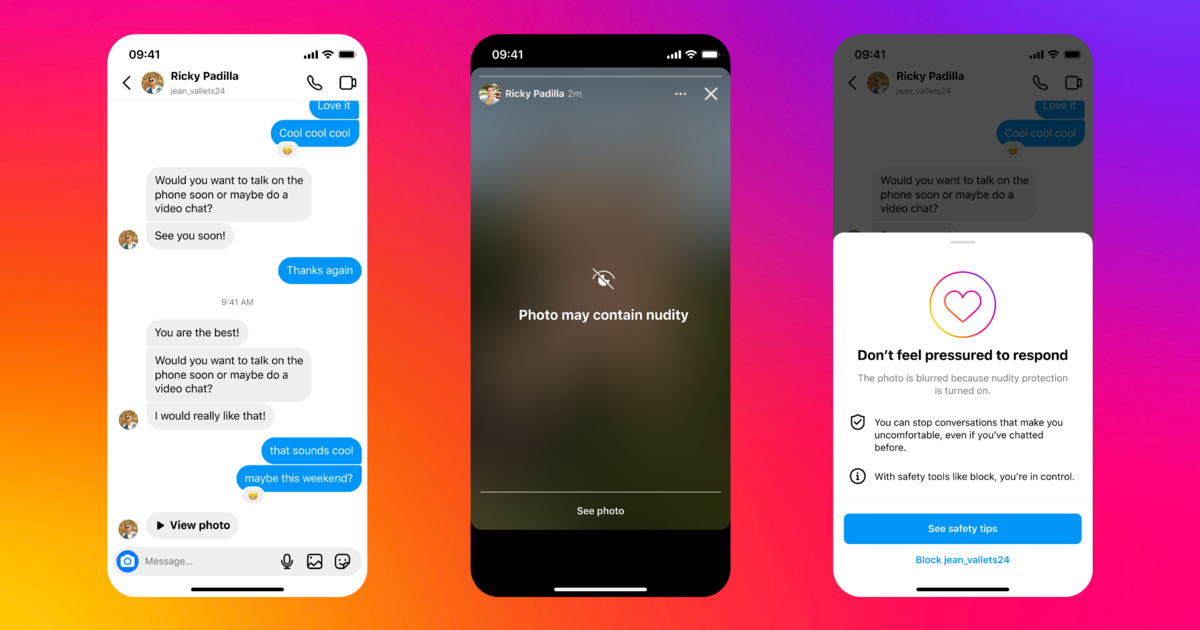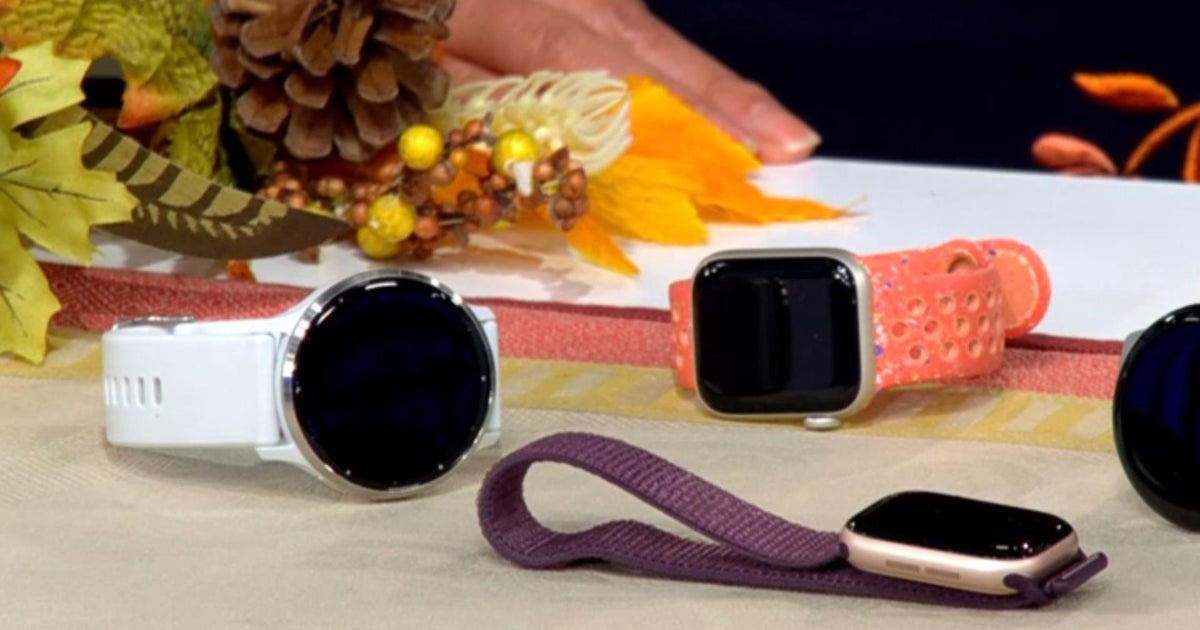CBS News
Meta tests new auto-blur tool and other features on Instagram designed to fight sextortion

Meta is trying out new tools on its Instagram platform to combat the sexual extortion of teens, including a feature that will automatically blur photos containing nudity in direct messages.
The social media company announced in a blog post Thursday that new features, including the auto-blur technology, are part of a campaign to fight sexual scams and make it tougher for criminals to contact teens.
“This feature is designed not only to protect people from seeing unwanted nudity in their DMs, but also to protect them from scammers who may send nude images to trick people into sending their own images in return,” the company said.
Meta also owns Facebook and WhatsApp but the nudity-blur feature won’t be added to those platforms.
Sexual extortion, or sextortion, happens when one person coerces another person into sending explicit photos of themselves, and then threatens to make those images public unless the victim pays money or engages in sexual favors. One recent case involves two Nigerian brothers who pleaded guilty Wednesday to sexually extorting teen boys across the country, including one 17-year-old in Michigan who took his own life.
In another case, a 28-year-old former Virginia sheriff’s posed as a teen online in order to obtain nude pics from a 15-year-old girl in California whom he sexually extorted and kidnapped at gunpoint, after driving across country, killing her mother and grandparents and setting their home on fire.
Sextortion has become such a major issue that the FBI in January warned parents to monitor their children’s online activity amid a rising number of cases.
The nudity protection feature will be turned on by default globally for teens under 18. Adult users will get a notification encouraging them to activate it.
Meta Platforms
In addition to the automatic blurring of images, a warning will appear giving users the option of whether or not they want to view the image. They’ll also have the option to block the sender and report the chat.
For users sending direct messages with nudity, a message will appear on screen reminding them to be cautious when sending “sensitive photos.” They’ll also be informed that they can unsend the photos if they change their mind, but that there’s a chance others may have already seen them.
To stop scammers and sexual predators from connecting with young people, the company says it is also expanding current restrictions, including not showing the “message” button on a teen’s profile to potential sextortion accounts, even if the two accounts are connected.
Children’s advocates applauded Meta’s move on Thursday, saying the features introduced appear encouraging.
“We are hopeful these new measures will increase reporting by minors and curb the circulation of online child exploitation,” John Shehan, the senior vice president at the National Center for Missing & Exploited Children, said in Meta’s blog post.
CBS News
A study to devise nutritional guidance just for you

It’s been said the best meals come from the heart, not from a recipe book. But at this USDA kitchen, there’s no pinch of this, dash of that, no dollops or smidgens of anything. Here, nutritionists in white coats painstakingly measure every single ingredient, down to the tenth of a gram.
Sheryn Stover is expected to eat every crumb of her pizza; any tiny morsels she does miss go back to the kitchen, where they’re scrutinized like evidence of some dietary crime.
Stover (or participant #8180, as she’s known) is one of some 10,000 volunteers enrolled in a $170 million nutrition study run by the National Institutes of Health. “At 78, not many people get to do studies that are going to affect a great amount of people, and I thought this was a great opportunity to do that,” she said.
CBS News
It’s called the Nutrition for Precision Health Study. “When I tell people about the study, the reaction usually is, ‘Oh, that’s so cool, can I do it?'” said coordinator Holly Nicastro.
She explained just what “precise” precisely means: “Precision nutrition means tailoring nutrition or dietary guidance to the individual.”
The government has long offered guidelines to help us eat better. In the 1940s we had the “Basic 7.” In the ’50s, the “Basic 4.” We’ve had the “Food Wheel,” the “Food Pyramid,” and currently, “My Plate.”
CBS News
They’re all well-intentioned, except they’re all based on averages – what works best for most people, most of the time. But according to Nicastro, there is no one best way to eat. “We know from virtually every nutrition study ever conducted, we have inner individual variability,” she said. “That means we have some people that are going to respond, and some people that aren’t. There’s no one-size-fits-all.”
The study’s participants, like Stover, are all being drawn from another NIH study program called All Of Us, a massive undertaking to create a database of at least a million people who are volunteering everything from their electronic health records to their DNA. It was from that All of Us research that Stover discovered she has the gene that makes some foods taste bitter, which could explain why she ate more of one kind of food than another.
Professor Sai Das, who oversees the study at Tufts University, says the goal of precision nutrition is to drill down even deeper into those individual differences. “We’re moving away from just saying everybody go do this, to being able to say, ‘Okay, if you have X, Y and Z characteristics, then you’re more likely to respond to a diet, and somebody else that has A, B and C characteristics will be responding to the diet differently,'” Das said.
It’s a big commitment for Stover, who is one of 150 people being paid to live at a handful of test sites around the country for six weeks – two weeks at a time. It’s so precise she can’t even go for a walk without a dietary chaperone. “Well, you could stop and buy candy … God forbid, you can’t do that!” she laughed.
While she’s here, everything from her resting metabolic rate, her body fat percentage, her bone mineral content, even the microbes in her gut (digested by a machine that essentially is a smart toilet paper reading device) are being analyzed for how hers may differ from someone else’s.
Nicastro said, “We really think that what’s going on in your poop is going to tell us a lot of information about your health and how you respond to food.”
CBS News
Stover says she doesn’t mind, except for the odd sounds the machine makes. While she is a live-in participant, thousands of others are participating from their homes, where electronic wearables track all kinds of health data, including special glasses that record everything they eat, activated when someone starts chewing. Artificial intelligence can then be used to determine not only which foods the person is eating, but how many calories are consumed.
This study is expected to be wrapped up by 2027, and because of it, we may indeed know not only to eat more fruits and vegetables, but what combination of foods is really best for us. The question that even Holly Nicastro can’t answer is, will we listen? “You can lead a horse to water; you can’t make them drink,” she said. “We can tailor the interventions all day. But one hypothesis I have is that if the guidance is tailored to the individual, it’s going to make that individual more likely to follow it, because this is for me, this was designed for me.”
For more info:
Story produced by Mark Hudspeth. Editor: Ed Givnish.
“Sunday Morning” 2024 “Food Issue” recipe index
Delicious menu suggestions from top chefs, cookbook authors, food writers, restaurateurs, and the editors of Food & Wine magazine.
CBS News
A new generation of shopping cart, with GPS and AI

Watch CBS News
Be the first to know
Get browser notifications for breaking news, live events, and exclusive reporting.
CBS News
“All hands on deck” for Idaho’s annual potato harvest

Watch CBS News
Be the first to know
Get browser notifications for breaking news, live events, and exclusive reporting.












